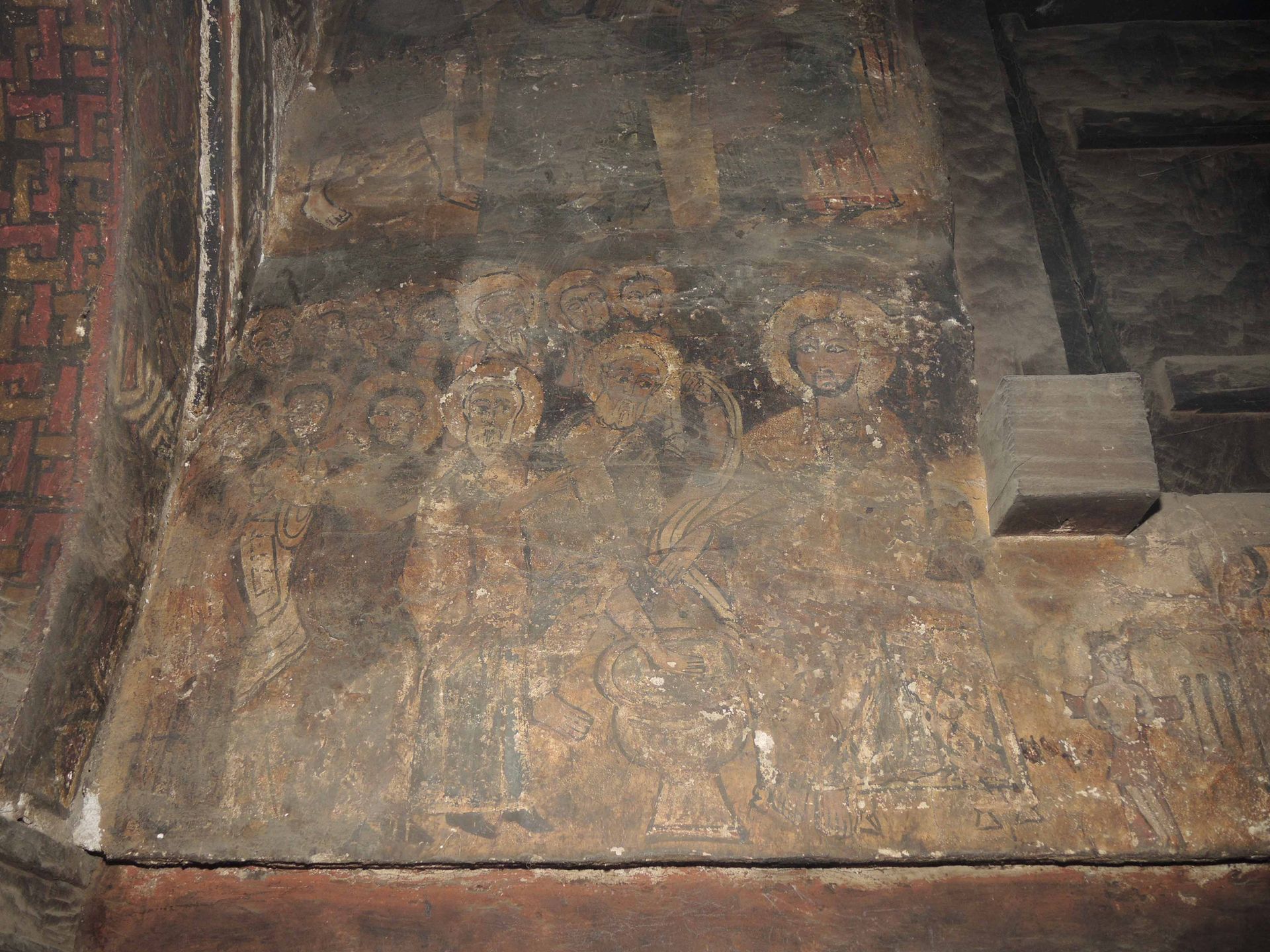A project to conserve Ethiopia’s oldest wall paintings, which experts believe date to around 1100 or soon after, is due to begin this month. They are in the church of Yemrehanna Kristos, a full-sized building constructed inside a cave in the Lasta Mountains at an altitude of 2,700m. The cave is above a valley of juniper trees and, until recently, could only be reached by a day’s journey on foot or mule from the town of Lalibela, in northern Ethiopia. The church’s interior is so dark that international specialists did not note the paintings’ existence until the 1990s; the first published account was in 2001.
The London-based Ethiopian Heritage Fund, with support from the World Monuments Fund, is undertaking the project. The conservation team consists of two British specialists, Lisa Shekede and Stephen Rickerby; the latter describes the paintings as being in a “highly vulnerable and threatened condition”.
Yemrehanna Kristos, a king of the Zagwe dynasty, ruled from around 1087 to 1127, and the church was built during his reign or shortly afterwards. Behind the church, deeper into the cave, lie the bones of thousands of pilgrims who are said to have travelled from as far as Egypt, Palestine and Syria to die. Priests and hermits still live on the ledge of the cave. A road from Lalibela to a location relatively near Yemrehanna Kristos has recently been completed.
The church, which is 13 metres long and eight metres tall, is a fine example of post-Axumite architecture, built of alternate layers of timber and plastered stonework that give it a striped appearance. Tradition has it that the wood came from Egypt and the gypsum from Jerusalem. Specialists including Jacques Mercier, from the Centre National de la Recherche Scientifique in Paris, and David Phillipson, from the University of Cambridge, are convinced that the wall paintings are part of the original building. The Ethiopian Heritage Fund calls them the oldest wall paintings in the country.

The figurative images are mainly New Testament scenes, many of which are now barely legible because of an accumulation of dirt. They include a depiction of the arrival in Egypt of the Holy Family, who are welcomed by an angel. Mary rides a donkey, with Joseph walking behind, carrying the Christ Child on his shoulders. The wooden ceiling is decorated with 17 painted medallions of animal motifs: wild beasts, birds, an elephant, a winged creature, a scorpion and a dragon. Other wall paintings have geometric designs.
Rickerby warns that “structural cracking has resulted in damage and loss of important painting and decoration, so risks of further collapses are a major concern”. Most vulnerable is the north aisle and the arches that connect it to the nave, where cracks, quite possibly recent ones, have developed. These may have been caused by earth tremors, since the cave lies on the edge of the Eastern African Rift.
There have been earlier, botched attempts to conserve the paintings: although the treatment is undocumented, conservators suspect that varnish was applied in the late 20th century. This has darkened the images and could also have exacerbated paint flaking. A few years ago, a brush was apparently used to sweep away dust from the surface of the pictures, which also removed small fragments of paint. This latest conservation project, the first to adhere to modern conservation standards, has been approved by Ethiopia’s Authority for Research and Conservation of Cultural Heritage. The US Ambassadors Fund for Cultural Preservation has contributed $150,000.
The initial investigation will include in-situ microscopy, along with ultra- violet and infra-red examinations. Paint samples will be tested, partly to determine the original pigments and media used and to identify added materials. There will be small-scale cleaning trials, to test which materials should be used. Monitoring sensors will be installed to record temperature and humidity changes. A separate team from the University of Cape Town will undertake a laser scan survey to create a three- dimensional data model of the church and cave, to map structural movement.
Rickerby and Shekede hope to return for two three-week campaigns to undertake the actual conservation work, in October and early 2017. Their first priority will be to stabilise the flaking paint. They will then clean the paintings.
The investigation and conservation work may answer one of Yemrehanna Kristos’s great riddles—namely, where the artists came from. Most specialists see parallels with Coptic painting, but the nature of the early artistic links between Ethiopia and Egypt remains a mystery.

